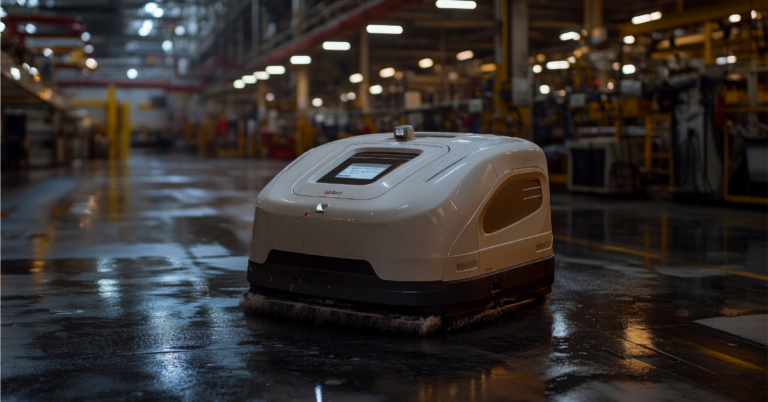Growth is always good- right?
For robotics companies, growth means larger fleets and more robots deployed to customer locations; all positive trends. However, scaling your robot operations also means it’s time to take a look at how your internal robot platform will support a larger fleet.
A robot platform is vital to the success of any fleet- from deployment to scaling, plenty of data is ingested, errors occur, and robots may even need to be navigated out of sticky situations. And if your internal platform can’t keep up, day-to-day operations can quickly become a terrible headache for your team and end up even costing you some customers.
How can you tell when it’s time to utilize a third-party robot platform before bigger issues show up? Let’s have a look at the telltale signs.
1. You’re scaling your fleet across multiple locations
Many early-stage robotics companies have initial pilots and customers near their headquarters. This makes sense, given the fact that nearly every step of the initial go-to-market process is easier for customers that are located nearby. But when you close a customer in another state or another country, the need for robust remote monitoring and management becomes very real very fast.
This is when problems that seemed small in initial deployments become big, and teams ask the hard questions about their software, such as:
- Can we easily reboot robots remotely?
- Is our in-house teleop solution really solid?
- How do we collaborate on complex tech-support issues remotely?
It might seem obvious, but scaling your fleet comes with much more than shipping hardware and deploying; you’re also scaling the number of customer issues your team will be handling. Which leads us to the next point…
2. Tech support is becoming an overwhelming task
Even if a new deployment of robots goes flawlessly, robots aren’t perfect and eventually there will be a situation where a device needs help.
As operations continue to scale, your internal team can become overwhelmed with issues piling on and quickly fall behind. Any delay in response time can negatively impact uptime, productivity, and most importantly, customer satisfaction. Switching between tools to solve issues and not having enough data on hand to make the proper tech diagnoses- especially if a team is remote- only further adds to the stress.
Teams can be scaled linearly as tech support demand does, but this will add additional labor costs to the equation and will be a never-ending race to catch up. Any win of a new customer or deployment will result in adding headcount (or additional burden) to the support team.
3. Current analytics aren’t diving deep enough
Data is king in robotics- it affects the safety, health, and productivity of every robot in a fleet. If you don’t have all the data you need, operations and maintenance can become an impossible task.
Outside of real-time operations, data is critical for proving ROI. Although plenty of industries need automation, proving the value of your robots isn’t as easy as providing a solution. Competitors are vying for the same customers, and your best asset is your data. Proving the effectiveness of robots utilizing existing data is vital for sales conversations, but if you don’t have this data readily available, you’re immediately at a disadvantage to any other options prospects are weighing.
Having the ability to access deeper analytics is also important to ensure your robots are always performing as optimally as possible. Tracking week-over-week performance data, for example, can be the key to revealing any optimization your robots may need to perform missions effectively and ensure customers are happy.
4. Your customer churn rate has increased
Of course, there will always be times when customers aren’t happy with your robots. A few churned customers are to be expected for any company but a noticeable increase could be attributed to internal issues likely related to your robot platform.
When your internal team is feeling the pain of delays and bugs, customers will feel it too. The longer a robot sits offline with an error or continues to have issues with a task, your customer is losing money. If your platform experiences an outage, all of the support team must turn their attention to the issue- leaving other important customer work to the wayside.
With a third-party platform, this work is instantly outsourced and your team is instead able to continue to focus on work for their customers and improving robot productivity rather than consistently addressing errors. When customers feel more supported, churn will decrease and internal teams can breathe a sigh of relief, knowing they will always have a team on the backend to tackle customer issues as soon as they arise.
5. Displaying the right data to customers is a struggle
A large part of making customers happy is giving them access to the data they need whenever they need it. Almost every customer will want to see the data coming from their robots at some point and if you can’t display it to them in an organized way, you’re at an immediate disadvantage.
Decision-makers want to know they can always view data from a single pane of glass, with insight into the efficiency and performance of the robots in their fleet. When your internal platform cannot provide your customers with a way to view this data, or it’s delayed, it spells trouble for the relationship and any expanded sales conversation beyond current deployments.
In addition, many customers of robotics companies will also have an additional layer of end-users, who are often non-technical, that are engaging with robots in the field. Providing a customer portal for these users becomes key for gaining adoption within key accounts.
6. Bandwidth costs are exceeding your budget
Robots and their sensors ingest a multitude of data constantly, from battery charge to CPU, LiDAR, and more. All of this data is precious to the robot provider as it gives critical insight from a granular issue of debugging to data sets that reveal fleet-wide trends and prove ROI. Robotics companies need a plan from the start around how they are going to build a tech stack that gives them access to the data they need.
The opposite of being unable to access any data is to treat all data the same, which can have an equally negative effect. When all data is captured regardless of priority, bandwidth costs quickly skyrocket, which can put unplanned stress on both you and your customers.
Enlisting the help of a third-party robot platform such as Formant will not only help to prioritize the right data, but also helps to control the costs by setting limits for data, depending on the network. For example, you might want to stream HD video from picking robots deployed in a warehouse with good wifi, but weeding robots deployed in a field might want to adjust frequency or quantity of data uploaded depending on whether they are connected to wifi or are operating on a low-bandwidth cellular network.
Reflect on the decision internally
Scaling your fleets and landing new customers is always exciting, but it should also be thought of as a time to take a deep look at your internal operations. Consider the condition of your team- are they feeling burned out trying to keep up? Do they feel they can keep up with potential customer issues on top of existing work? Sometimes your internal churn is just as indicative as customer churn and can hint that it’s time for additional support.
If you think it’s time to seek a third-party software solution, Formant is here to help you bridge the gap between your robots and their data. With our solutions for teleoperation, data management, fleet management, and customer portals, we work with you to ensure you always have the right data at the right time which helps your robots work as effectively as possible. You can request a demo with our team to learn more about how Formant is already helping robotics companies across multiple industries better manage their data.



